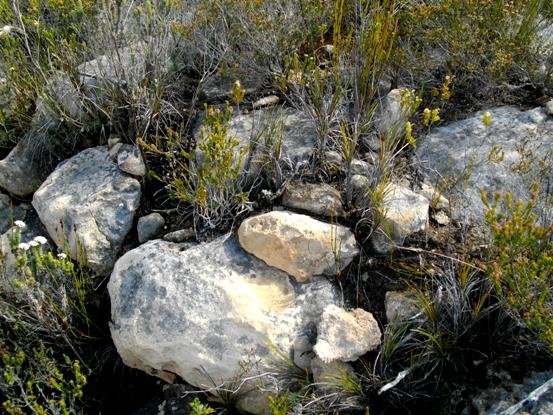OK, only if left alone!

Author: Ivan Lätti
Photographer: Ivan Lätti
As above-ground plant parts look very different, their root shapes and sizes below-ground also contribute dissimilar features. This adds another reason why biodiversity is important.
Soil stabilisation may easily be lost when delicate ecologies are interfered with. Plant life cycles replenish nutrients in the ground, stimulating new plants to grow. The cohering vegetation functions as one entity in moisture retention, thereby sustaining life.
The known history of a disturbed patch of land sometimes contains fairly small incidents, seemingly innocuous events that caused the land degradation. Recovery may, however, take many years, more than the human perpetrators lifetime.
Loose soil is particularly vulnerable to erosion from natural processes involving wind and water. The scrub seen here among limestone rocks in the De Hoop Nature Reserve is sparse, but diverse. If it looks this delicate and vulnerable in a well conserved place, imagine what it might look like in a densely populated area where due care is absent.
Not walking in the designated paths in a nature reserve has a similar effect as the overgrazing of farm land.

